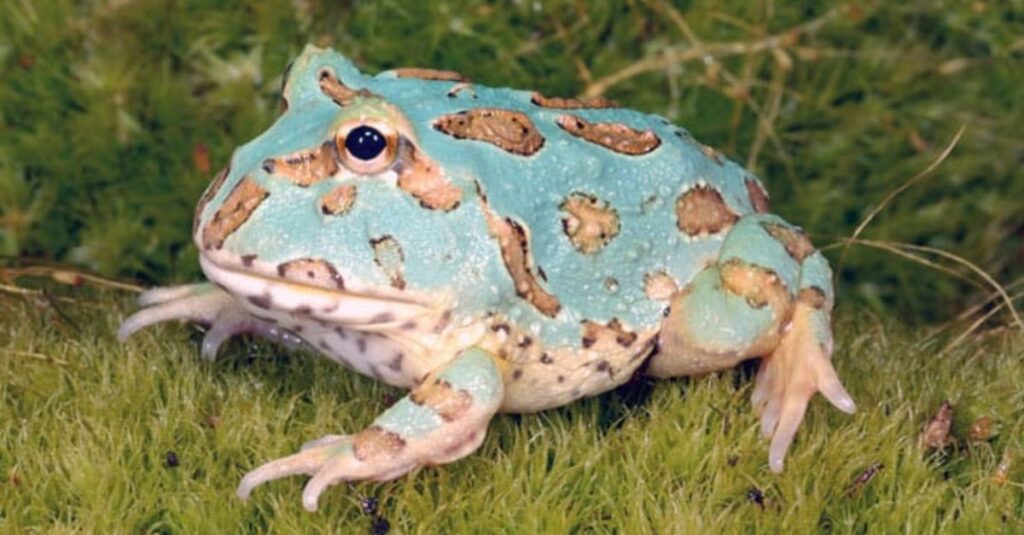🐸 Why Is My Pacman Frog Not Eating?
Troubleshooting Appetite Loss in Horned Frogs
Why Is My Pacman Frog Not Eating? - At a Glance
Is It Normal for a Pacman Frog to Stop Eating?
Yes—sometimes. Adult Pacman frogs occasionally fast for short periods, especially during cooler months or seasonal transitions. However, a frog that won’t eat for more than 2 weeks, or shows signs of lethargy or weight loss, may need attention.
Common Reasons Your Pacman Frog Isn’t Eating
1. Incorrect Temperature
Pacman frogs are cold-blooded. If the tank is too cool, their metabolism slows, and so does their appetite.
✅ Fix:
Keep daytime temps at 75–85°F and nighttime no lower than 70°F
Use a digital thermometer and thermostat-controlled heat source
Avoid hot bulbs that can dry out the enclosure
3. Recent Environment Change
Tank rearrangements, substrate swaps, or rehoming can cause stress.
✅ Fix:
Minimize sudden changes
Allow the frog 2–3 days to settle after moves
Reduce handling during this period
5. Impaction
Feeding large prey or using dangerous substrate can block your frog’s digestive system.
Symptoms:
No poop for 5–7+ days
Lethargy
Swollen belly
✅ Fix:
Soak frog in shallow lukewarm water for 15–20 minutes
Use a smooth, soft substrate (no gravel or bark)
Avoid prey larger than the width of your frog’s head
7. Illness or Infection
Bacterial, fungal, or parasitic infections can cause loss of appetite.
Symptoms to Watch:
Skin discoloration
Open sores or fuzzy patches
Bloody stool or no stool
Weight loss
✅ Fix:
Quarantine the frog
Consult a vet experienced in exotic amphibians ASAP
Avoid using over-the-counter meds without diagnosis
2. Low Humidity
Humidity below 60% can cause dehydration and appetite loss.
✅ Fix:
Mist daily or install a fogger
Use moisture-holding substrates like coconut fiber or sphagnum moss
Keep humidity between 60–80% with a digital hygrometer
4. Overfeeding or Obesity
Pacman frogs will eat until they’re too full to move. If you’ve overfed recently, your frog might just need a break.
✅ Fix:
Space feedings appropriately: Adults = 2–3x/week
Offer lower-fat feeders like earthworms or dubia roaches
Skip pinkie mice for a few weeks
6. Brumation (Dormancy)
Older Pacman frogs may enter a hibernation-like state during winter.
Signs of Brumation:
Reduced activity
Burrowing for extended periods
Cool temperatures
No appetite
✅ Fix:
Keep tank warm and moist
Do not disturb the frog unless it appears ill
Appetite usually returns in a few weeks
8. Prey Size or Movement
Your frog might not like the prey type—or it’s too big to eat.
✅ Fix:
Offer live, wiggling prey
Use tongs to simulate movement
Stick to prey smaller than the frog’s head
Try different options (crickets, worms, dubia)
✅ When to Worry
Call an exotic vet if:
- Your frog hasn’t eaten in over 14 days
- There’s noticeable weight loss or bloating
- The frog is lethargic or not responding to stimuli
- There’s a foul odor or signs of infection

How to Jumpstart Their Appetite
Try one or more of these tricks:
Mist the tank and wait for dusk (prime feeding time)
Offer a variety of feeders—try a favorite like hornworms
Use feeding tongs to make prey “dance”
Place the frog in a feeding bin to reduce distractions
🐛 Pro Tip: Many Pacman frogs respond well to movement. A squirmy worm or vibrating tong can trigger a feeding response.
🙋♂️ FAQ: Frog Not Eating Edition
Q: My frog hasn’t eaten in 3 days—is that bad?
A: For adults, short fasts are normal. For juveniles, monitor closely and check tank conditions.
Q: Can I force-feed my frog?
A: Only under vet supervision. Force-feeding can stress or injure the frog.
Q: Should I try a pinkie mouse if it won’t eat insects?
A: No. Mice are rich and should be occasional only. Start with easier prey like worms or crickets.
